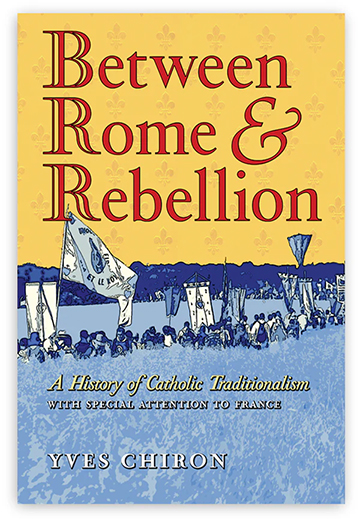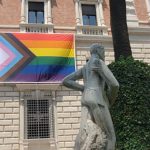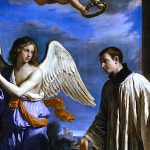
“…the Church, in her teaching, life and worship, perpetuates and hands on to all generations all that she herself is, all that she believes.” — Dei Verbum, 8
In 1993, from August 10 to 15, World Youth Day was held in Denver, Colorado. This event, as George Weigel has noted, was one of the catalysts for the birth of what became known as the John Paul II or “JPII” generation in American Catholicism. Prior to John Paul II’s arrival, the Church in America was marked by two distinctive pillars. The first was the residual of immigrant Catholicism, the Catholicism of the “Irish Catholic” or “Polish Catholic” (or Italian, Czech, German, etc.) American. These were Catholics who pursued the faith of their immigrant ancestors, attending Mass, joining the Knights of Columbus, wearing St. Anthony medals, and sending their kids to parochial schools.
The second major force in American Catholicism at this time was what has been called “Old Liberal” Catholicism. The Old Liberals were largely in sync with the intellectual trends of the New Left and the 1960s counterculture movement. While it would be unfair to label all the Old Liberals as “heretics,” it is true that some of the major Old Liberal figures professed views that at least appeared (and sometimes, in fact, were) heretical.
There was at this time a small but powerful group of Catholics, centered around ETWN, Ignatius Press, and budding “Newman Guide” colleges such as the Franciscan University of Steubenville and Christendom College, which could be called “conservative.” However, these conservatives were largely a minority voice. While conservative and liberal Catholics clashed with one another, both groups accepted the legitimacy of the Second Vatican Council and the 1970 Novus Ordo Missae—although the two groups’ interpretation of the Council—as well as how the Novus Ordo should be said and celebrated—could vary quite widely.
Conservatives, traditionalists, and the current situation
John Paul II’s arrival in 1993 helped energize the Catholic conservative movement, making it eventually the dominant cultural force in American Catholicism, and inspiring a host of educational initiatives as well as the birth of new religious orders. While it would be difficult to succinctly define the JP II generation, a general description might be given. The John Paul II generation largely consisted of Baby Boomers, Gen Xers, and early Millennials who grew up, came of age, or had a conversation (or re-version) during the pontificate of John Paul II (1978-2005). Intellectually, they were shaped by Christian existentialism and phenomenology and largely read the Church’s Thomistic intellectual tradition through these lenses. They attended a reverent Novus Ordo Missae. As opposed to a “fortress mentality,” which sought to shut out the world, they attempted to evangelize pop culture and were largely immersed in the world. They accepted Vatican II and were influenced by the Christian Democratic movements of Europe as well as the neoconservative movement in the United States.
Traditionalism in the United States, both before and immediately after the emergence of the JPII generation, was considered largely a marginal phenomenon. The 1962 missal was considered an aesthetic preference for members of the Fraternity of St. Peter or those who attended the “indult mass,” allowing its celebration. Certainly, there were monarchists, various Chestertonians, and both young and old fogeys who desired a return to the “old world” of aristocratic customs and folk culture, but these were largely marginal phenomena. Breakaway groups such as the SSPX and sedevacantists were considered schismatic movements outside the fold, and they had very little effect on mainstream Catholic discourse.
Today, the situation has radically shifted. What is called traditionalist Catholicism is a strong, even dominant, voice in American conservative Catholic discourse. Views once considered verboten like sedevacantism; the illegitimacy of not only the Second Vatican Council, but even the First Vatican Council; the illegitimately of not only the 1970, but even the 1962 missal; and a rejection of the Enlightenment, liberalism, and even modernity in general are now acceptable opinions, not only among American Catholics, but also among Protestants and even secular conservatives, who fall within the orbit of traditionalist discourse.
Traditionalism has been fueled by a variety of factors, but one of the most prominent is the rise of internet conspiracy culture. The overarching traditionalist conspiracy argues that a collaboration of communists, Freemasons, Jews, Western intelligence agencies, bankers, and other secret societies has infiltrated the Church and forced their fundamentally anti-Catholic ideas into the liturgy and doctrine of the Catholic Church. Until more recent revelations of horrific abuse in some traditionalist communities, the argument was made that the sex abuse scandals in the Catholic Church were tied to the apparent changes in doctrine and liturgy, and that good and holy priests who said some version of pre-1970 Catholic liturgy were immune to such faults.
A sympathetic but critical historian
French historian Yves Chiron (b. 1960), in his recent works, has explored some of the core pillars of traditionalist thinking, providing an objective analysis that topples some of the central trad shibboleths. At the same time, Chiron’s works are deeply sympathetic to the traditionalist movement. His biography of Pope St. Paul VI (“the divided pope”) depicts a well-intentioned, albeit liberal, pope who attempted to stymie the decline of Catholicism in Europe by modernizing the Church’s message. Chiron also notably puts to rest one of the key trad conspiracies about Paul VI’s personal life by noting that this harmful allegation has no substance and was fabricated by an Italian tabloid. Chiron’s biography of Annibale Bugnini likewise notes that, despite traditionalist claims, the archbishop was not even the main architect behind the 1970s missal, nor is there any evidence that he was a Freemason as some traditionalists claim.
In his most recent work, Between Rome and Rebellion: A History of Catholic Traditionalism with Special Attention to France, Chiron presents a comprehensive and sympathetic portrait of the traditionalist movement while also, as he does in other works, providing some major clarifications.
The first clarification is that the struggle between traditionalists and modernists predates the Second Vatican Council. This point is well-known throughout traditionalist and non-traditionalist circles. It begins in France with the French Counter Revolution, which began with Pius VI’s condemnation of the Declaration of the Rights of Man and the 1791 Civil Constitution of the Clergy and continued with Gregory XVI’s encyclicals Mirari vos (1832) and Singulari nos (1834) and Pius IX’s Quanta cura and the Syllabus Errorum (1864).
Traditionalism, in 19th-century France, was originally a movement that emphasized tradition vis-à-vis rationalist explanations of religion. Integralism commenced in Spain during the 1880s as an anti-liberal political movement under Ramón Nocedal Romea (1842-1907). In later 19th-century France, traditionalism took a more theological turn, being used by Catholics who wanted to defend Catholic theology against modernists who wanted to change it.
Pope Pius X famously condemned modernism as the synthesis of all heresies as opposed to a critical method. Benedict XV further renewed the condemnation of modernism in Ad Beatissimi. However, he noted, “Non nova, sed noviter” (Old things, but in a new way). Also, in order to eliminate “dissension and strife,” he argued that “no private individual, whether in books or in the press, or in public speeches, take upon himself the position of an authoritative teacher in the Church.” This is notable in the current age of social media magisterium, in which individual laymen appear to claim the ability to anathematize popes and to reject the canonization of saints.
Another important work is Cardinal Suhard’s Essor ou déclin de l’Église (1947). As a preliminary to Vatican II, John XXIII’s aggiornamento and Paul VI’s attempt to liberalize the Church’s presentation, Cardinal Suhard noted that the contemporary world had changed and was leaving the Church behind. Cardinal Suhard condemned both the innovators as well as those who refused any sort of accommodation with the modern world. He condemned both modernism and integralism. He also noted that Thomism is the official teaching of the Church, but that Thomas has not said everything to be said about philosophy.
Curiously, Suhard condemned integralism as being a secular and human endeavor. Interestingly, he further condemns those integralists who are “Christians of the Apocalypse and Parousia” who hold a worldview informed by Marian apparitions, mystics, and private revelations. He refers to this as excessive traditionalism that holds as being eternal what is not. This work is critical, for some traditionalists today claim support for their positions from Marian apparitions and other forms of private revelation.
The case of Archbishop Lefebvre
Archbishop Lefebvre, who appears in the chapter, “Archbishop Lefebvre, a Gentle Yet Unyielding Soul,” is one of the key figures in the book with whom American readers will be most familiar. While Chiron is sympathetic to Lefebvre, he lays out some clear criticisms—some of which are quite shocking. Lefebvre, for example, claimed to have received a vision in the cathedral at Dakar so he could found an international seminary in order to transmit the doctrinal purity of the Church and pass on the Catholic priesthood. This dream was then ratified by the mystic Marthe Robin.
This is a key point that Chiron handles with sympathy and tact: at least some traditionalists rely on private revelations to guide them. Even though it has been the tradition of the Church—encapsulated in the two great spiritual masters, St. Theresa of Avila and St. John of the Cross—that revelations and visions are not to be trusted. Archbishop Lefebvre obtained permission from Bishop Adam of Sion on May 19, 1970, to have a year of spirituality in Écône; the bishop granted permission for a seminary in December 1970. However, it wasn’t until June 9, 1971, that Lefebvre decided to publicly reject the New Mass. As Chiron notes, at first, Lefebvre argued for the faithful to attend the new Mass and even stated that the new Mass was not “invalid and heretical.” However, he would later refuse to let his followers attend the Novus Ordo.
Archbishop Lefebvre ordained two priests in 1971 and received permission to ordain both of them. Even though there were conflicts with the French episcopate as early as 1961, due to his “integrist” beliefs, it could not be stated that Lefebvre was then in direct disobedience to the Church. However, bishops soon began withdrawing their seminarians from the archbishop’s coenobium. Chiron notes that while French seminaries were shrinking, Lefebvre’s was growing (his seminary was not, however, the only traditionalist one formed at this time).
The first public criticism of Lefebvre’s seminary came in 1972 as the French press condemned the seminary as a “wildcat seminary” (séminaire sauvage), which was first coined by Fr. Marcus, the superior of the seminary at Issy-les-Moulineaux. Fr. Marcus said something rather odd but important, which drives home the paradox of the Catholic life in the post-Vatican II Church. He condemned Archbishop Lefebvre as producing seminarians who would be “unrecognizable” to the Church. If Lefebvre was indeed providing a traditional formation of priests with traditional Catholic discipline, this means that the Church’s tradition before Vatican II is “unrecognizable”; this is a point Benedict XVI would later clarify with his hermeneutic of continuity.
In one sense, Chiron depicts Lefebvre as a sympathetic figure who was singled out by the French bishops’ conference, which did not want to deal with or dialogue with him. Archbishop Lefebvre, in response to this initial shunning in 1972, sent a letter to the French bishops noting that he had received approval for his work from Bishop Adam of Sion and Bishop Charrière of Fribourg. This point is crucial, for at this point, Lefebvre still viewed his work as part of the canonical structure of the Church. Chiron further notes that the French bishops had condemned Lefebvre’s work even before he publicly attacked the Novus Ordo Missae or Vatican II.
This point is also crucial, for Chiron, throughout Between Rome and Rebellion, as well as other works, notes that traditionalists were attacked and condemned even when they were not in open rebellion.
Lefebvre’s seminary at Écône continued to grow even though it was attacked by both the French episcopate as well as the secular press. Furthermore, despite the belief among some traditionalists today that Archbishop Lefebvre was the “leader” of the traditionalist movement, he did not consider himself as such and, at least initially, wanted only to be the head of his seminary. Nonetheless, Lefebvre’s increasingly strident attacks on the Novus Ordo Missae, as well as Vatican II, drew even more ire from European bishops. The SSPX, which founded a house near Rome in 1974, still had the approval of some bishops and largely operated within the canonical structure of the Church.
Archbishop Lefebvre received the now-famous apostolic visitation in November 1974 by Cardinals Garonne, Wright, and Tabera. Lefebvre and some of the seminarians later claimed that some of the visitors made heretical claims during the visits—including, allegedly, expressing doubts about the Resurrection of Christ. Chiron, however, wisely states that he only has one side of the story.
The major break came with Archbishop Lefebvre’s “Declaration” of November 21, 1974, which presented a contrast between “Eternal Rome” and the “perennial magisterium of all time” and “neo-modernist” Rome. This was a major public break in which Lefebvre implied that the Church in Rome was not the true Church, or at least had been corrupted and stands apart from the true Church. As Chiron notes, Archbishop Lefebvre would later express that the “Declaration” was written with “excessive indignation.” Moreover, even some of the professors at the seminary were worried by the Declaration, which, Chiron argues, was viewed as a “declaration of war.” At the same time, Chrion notes, Lefebvre also wanted to remain in unity with the pope.
Lefebvre was summoned to Rome in February and March 1975. In the second of these two meetings, Cardinal Garrone accused Lefebvre of teaching his seminarians to rely on “personal judgement” as well as attempting to form a “new Church.” Bishop Mamie of Fribourg withdrew the approval for the SSPX, and a commission of cardinals, with Paul VI’s approval, removed the canonical approval for the SSPX. Chiron quotes an article from Louis Salleron in Le Monde, which argues that the decision for the removal of the SSPX’s canonical status was not because of the SSPX’s adherence to the Latin Mass but because of the defiance of the Declaration.
This is one of Chiron’s key points throughout his work: traditionalists may have been treated unjustly at various points in the development of their movement, but there usually comes a point when some act of defiance facilitates a break with the Church. In June 1975, Paul VI asked for a public act of submission from Archbishop Lefebvre.
Defiance rather than obedience
One of the other key revelations of Between Rome and Rebellion is the belief, among some traditionalists, that near the end of 1976, there was a marked change in Archbishop Bishop Lefebvre’s public statements and also his character and even mental health. Chiron handles this matter with tact but also with honesty. Dom Roy made this comment, and Cardinal Siri likewise allegedly planned to appeal to Paul VI on Archbishop Lefebvre’s behalf, claiming that Lefebvre had arteriosclerosis, which was impairing his judgment. The Abbot of Fontgombault likewise wrote to Paul VI, claiming that Lefebvre was suffering from health problems, which were impacting his cognitive functioning. Lefebvre’s friends further encouraged him to write a letter to Paul VI, affirming his obedience.
Presented with the explicit command to accept Vatican II and to say the Novus Ordo, Archbishop Lefebvre refused and went on to ordain 13 priests on June 29, 1976; he was then suspended a divinis on July 22. Thus, the SSPX would continue to function outside the canonical structure of the Church even to this day. Under John Paul II and Benedict XVI, however, those attached to the 1962 missal would be granted greater liberties, and Chiron hints that if the SSPX had not been defiant and had instead been patient, things would have improved.
The left-wing conspiracy theorist Lyndon LaRouche (who later became a right-wing conspiracy theorist), who became entangled with traditionalist Catholics in Northern Virginia, once referred to traditional Catholicism as “a gnostic cult that has nothing to do with authentic Christianity.” This statement is unfair to the average Catholic layman in the pews. However, LaRouche’s claim does have some merit inasmuch it is directed toward certain cultural expressions of traditional Catholicism. At its heart, traditionalist Catholicism should be the desire to preserve the authentic teaching of the Catholic Church.
That includes the desire to follow the Church’s authentic political teaching. All too often, however, various political and intelligence organizations have exploited this desire for their own ends. Moreover, as Yves Chiron has demonstrated, at least some (if not all) of the trad conspiracies are false, and there have been major issues and pathological behavior among some traditionalists since the beginning. If anything, the claim of “traditionalist” Catholic can be a distraction. If someone is not trying to follow the Church’s authentic teaching, what sort of Catholic are they? What is needed are those who do not prioritize ideologies or chase conspiracy theories, but seek to be, first and foremost, simply Catholic and a follower of Jesus Christ.
Between Rome & Rebellion: A History of Catholic Traditionalism with Special Attention to France
By Yves Chiron. Translated by John Pepino.
Angelico Press, 2024
Paperback/Hardcover/Ebook, 432 pages
If you value the news and views Catholic World Report provides, please consider donating to support our efforts. Your contribution will help us continue to make CWR available to all readers worldwide for free, without a subscription. Thank you for your generosity!
Click here for more information on donating to CWR. Click here to sign up for our newsletter.
















